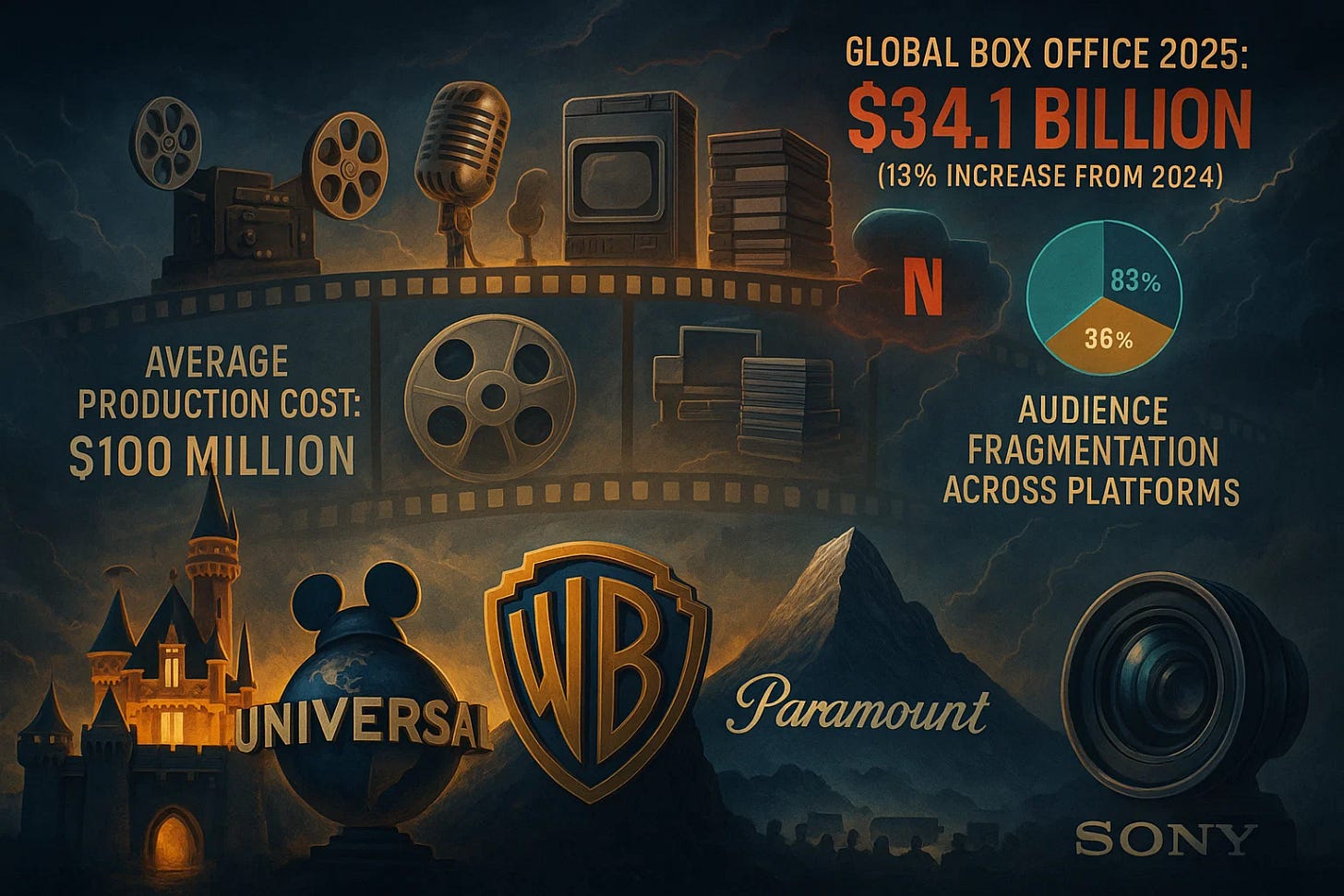The giants of Hollywood—Disney, Universal, Warner Bros., Paramount, and Sony—stand as testaments to resilience, each surpassing a century in an industry perpetually reshaped by innovation. They've navigated the transition from silent films to talkies, the rise of television, the home video revolution with VHS and DVDs, and the streaming surge dominated by Netflix.
Yet, as of August 2025, with global box office projections reaching $34.1 billion—a 13% increase from 2024—the challenges intensify. Production costs for major releases hover around $100 million on average, theatrical margins shrink, and viewers fragment across platforms, where 83% of U.S. adults now stream content compared to just 36% subscribing to traditional cable. This landscape demands a complex understanding of what drives audiences, revealing patterns that separate fleeting successes from lasting dominance.
Disney, boasting 127.8 million Disney+ subscribers globally, confronts a shifting demographic reality. Its stronghold in family-oriented franchises like Marvel and Star Wars faces erosion among Gen Z males aged 13-28, who favor immersive gaming from Epic Games or viral shorts on TikTok. Company-led studies highlight how pandemic isolation amplified this drift, prompting CEO Bob Iger to seek original pitches beyond the remake-heavy "Mickey Mouse Strategy." This move aims to reignite theater-going habits, drawing on insights from figures like Steven Spielberg, whose timeless adventures underscore the power of fresh narratives in recapturing elusive viewers.
The streaming arena Disney maneuvers through illustrates the competitive stakes.
Keep reading with a 7-day free trial
Subscribe to The Most Important News to keep reading this post and get 7 days of free access to the full post archives.



